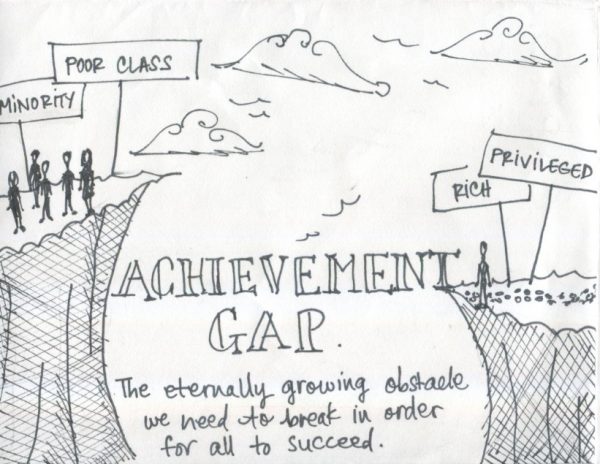Generally speaking, achievement gap refers to outputs, the unequal or inequitable distribution of educational results and benefits.
Here are some of the causes of achievement gap.
1. Poverty, income inequality, and lower socioeconomic status contributing to reduced access to educational opportunities, familial support, good nutrition, healthcare, and other factors that tend contribute to stronger educational achievement.
2. Minority status giving rise to racism, prejudice, stereotyping, ethnic bias, and institutionalized predispositions—such as the tendency in schools to lower academic expectations for minorities or enroll them in less-challenging courses—that may negatively affect educational achievement.
3. Lower-quality schools, ineffective teaching, student overcrowding, dilapidated school facilities, and inferior educational resources, programs, and opportunities in economically disadvantaged schools and communities.
4. The disproportionate representation of minority and lower-income students in the lowest-achieving schools, lower-level academic classes, and courses taught by the least experienced or effective teachers.
5. Parent and family factors such as low educational attainment, unemployment, or familial instability contributing to reduced academic motivation, disrupted education, or lower educational and career aspirations.
6. Little or no English-language understanding, fluency, or literacy contributing to educational under performance, decreased academic motivation, or higher dropout rates.
7. Flawed testing and assessment designs that may inadvertently skew scores for certain groups of students over others, such as computer-based tests administered to students with low technological literacy or tests that are written with a “cultural bias” and use terms, concepts, and situations that may be less understandable to certain groups of students, such as urban minorities or the children of immigrant families.
8. The structure of the American system of public schooling and teacher preparation contributing to lower academic performance in comparison to some higher-performing education systems in other developed countries. In this case, a few internationally administered tests and studies—particularly the Programme for International Student Assessment, the Trends in International Mathematics and Science Study, and the Progress in International Reading Literacy Study—provide the comparative performance data used to determine international achievement gaps.

